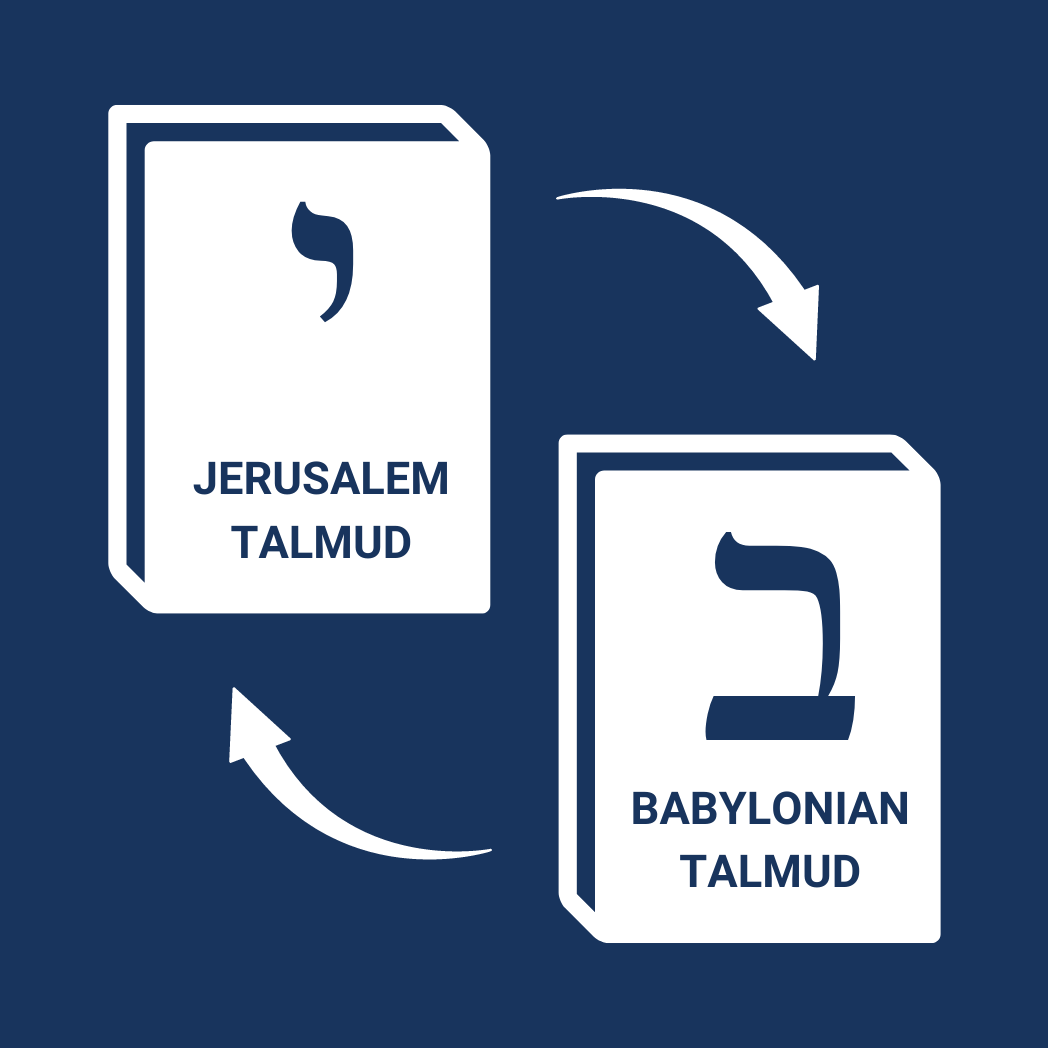“The Talmud says”: Shared Stories in the Babylonian and Jerusalem Talmuds
Since there are actually two Talmuds, the Babylonian and the Jerusalem Talmud, “the Talmud says” is only part of the story. In fact, the Talmud Bavli and Yerushalmi feature many of the same narratives, but their respective tellings are unique. Sometimes the differences between the two are readily apparent. At other times, they are much more subtle, but no less significant. This collection highlights several of these parallel stories and invites you to notice and reflect on the differences between them. Sefaria is grateful to de Gruyter GmbH for making these resources available.
Sheets
Filter
 No Shofar on Shabbat: Two Approaches
No Shofar on Shabbat: Two ApproachesWhy do you think many communities don’t blow the shofar on Rosh Hashanah when it falls on a Shabbat? The Babylonian and Jerusalem Talmud texts in this sheet present two very different reasons.
 “They established that which they accepted”: Revelation and Consent
“They established that which they accepted”: Revelation and ConsentFrom one story in the Babylonian Talmud, the rabbis infer that God forced the Jewish people to accept the Torah. It then uses a verse from the Book of Esther to show that the Jews actually voluntarily accepted the Torah. The Jerusalem Talmud interprets the verse very differently.
 Where does “Shiva” come From?
Where does “Shiva” come From?What is the source for the custom to mourn for seven days after burying one’s immediate relative (“shiva”)? The rabbis of the Babylonian and Jerusalem Talmuds take the learner on an adventure to find out.
 Achnai’s Oven and “It is not in the heavens!”
Achnai’s Oven and “It is not in the heavens!”Achnai’s Oven exemplifies the Talmud’s revolutionary approach to Jewish legal rulings. Those who study Achnai’s oven are most familiar with the Babylonian Talmud’s (Talmud Bavli) version, but a very different telling appears in the Jerusalem Talmud (Talmud Yerushalmi).
 Who do we harm when we do mitzvot illegally?
Who do we harm when we do mitzvot illegally?Can mitzvot be fulfilled when doing so would require someone to transgress? If not, why not? Who do we harm? The Babylonian and Jerusalem Talmuds agree with the principle, but disagree as to who is harmed in such a situation.

Editors
SE

Sefaria Education
Owner

